Years back when I first came across the term squat, frankly I failed to understand it. Well if you just want to know the mathematical formula and calculate the squat, it is no rocket science. But to answer questions like “Why do squat effect take place” may not be easy to understand.
Are you too in the same boat ?
Most of us know that Squat is the decrease in ship’s under keel clearance due to vessel’s movement in the shallow water. And it is not a theoretical thing, it is a real thing.
Incident of sinking of RO-RO vessel “Herald of free enterprise” was the result of squat.
But squat is not always bad. In 2010, passenger vessel “Oasis of the sea” used the squat to its advantage. It allowed squat to reduce its air draft. This helped the vessel to safely pass under a bridge, which otherwise was not possible.
Incidents like these show how important the knowledge of squat is. But there are many questions related to squat, answers to which are sometimes difficult to find.
In this post I will try to answer five of these questions related to squat that mariners usually ask or enquire about.
Question 1: Why and how does squat effect take place ?
The ships float in water because of one simple reason. There is no net force acting on the ship. Now it is not that there are no forces acting on the ship. But all these forces are equal and opposite in nature.
Two of these forces that act in opposite directions are gravitation force and buoyancy. Force of gravity like to sink the ship and force of buoyancy likes to make it float. Force of gravity continue to sink the vessel until force of buoyancy becomes equal to force of gravity.
Even when we add a weight (cargo) on a floating ship, the gravitation force increases. This will cause the ship to sink up to a point when force of buoyancy (that increases as per the Archimedes principle) becomes equal to the gravitation force.
If you wish to read more about Archimedes principle, you can do so by clicking here, here or here.
The point I am trying to make here is that any increase or decrease in a force on or around ship will affect the ship in a way that depends upon the direction of force.
Squat is the decrease in ship’s under keep clearance when it moves in shallow water because of low pressure created under the ship.
Now the question is why do we have low pressure under the ship when it is moving in shallow waters. The answer lies in Bernoulli’s theorem.
If you are OK with reading little bit of physics, you can read about the Bernoulli’s theorem by clicking here or here.
But if you are in no mood to deviate from the topic of squat then you just need to know following from Bernoulli’s theorem
As per Bernoulli’s theorem, in a flowing liquid if the flow velocity increases, the pressure in the region would decrease. Above conclusion is drawn from the Bernoulli’s law of conservation of mass in a flowing liquid. As per Bernoulli’s theorem, the mass of flowing liquid in per unit area will always be same.
Now have you tried to run fast and felt air resistance acting on your chest ? You feel some pressure on your chest. But do you feel similar pressure on your back ? I am sure your answer is No.
You feel this pressure on your chest because your chest is trying to replace the air as you move (or run) forward. The air so replaced by you fills the vacuum you created by leaving your earlier position.
In the same way, when a ship moves forward it pushes the water forward. The water all around must flow under and around the hull to replace the volume of water pushed by the bow.
In open sea there is no problem for the water to flow under the hull. But in shallow waters, this flow is restricted. This results in higher flow velocity of water passing under the hull. And there is decrease in pressure because of high velocity of water (as per Bernoulli’s theorem).
Now as the pressure at the bottom of the ship decrease, ship need to react in some manner to compensate that. Remember we said, ship’s float because net force acting on the ship is zero. This drop in pressure is compensated by the sinkage of the vessel as the direction of this force (low pressure) is downwards.
But will this sinkage be bodily, by stern or by bow ? We will discuss it later.
Question 2: What are the factors that affects Squat ?
Now that we know the reason behind squat effect, let’s see what factors affects squat.
Speed of the vessel
As we know the squat is caused by the low pressure that is developed under a ship in shallow water. With more and more speed of the vessel, the squat will increase. This is because with more speed, the vessel will push more water forward and more water is required to fill that void.
This will cause more drop in pressure under the hull and vessel need to sink more to compensate for that drop in pressure.
But we need to understand that the speed here is “speed through water” and not “speed over ground”. Why, you may ask ?
Consider a ship moving at 6 Knots GPS speed with 6 knots current from astern. Is the ship pushing any water forward ? No it isn’t because the water is flowing with the ship. In fact in this case ship will not be using engine as the ship will be moving with the current. Will there be any squat in this case ? No there will not be because as the ship is not pushing any water forward, no water is required to pass under the hull of ship.
So the squat in this case will be zero because the ship’s speed through water is zero. This is even when the ship is having a speed over ground (GPS speed) of 6 knots.
So we can say that squat depends upon the speed through water.
This is also the reason that vessel can experience squat while alongside in a river with strong current. In this case vessel’s speed over ground is zero but speed through water is equal to the the river current.
Block coefficient of the vessel
I am sure you already know what block coefficient of the vessel is. But I will refresh this for those who might need it.
Block coefficient is the ratio of vessel’s underwater volume (Displacement) to the volume of a box that this could fit in.
So for a box shaper vessel, the block coefficient will be 1.
But how does block coefficient of a vessel affect Squat ?
Again it all depends upon how much water a moving ship pushes forward. Let me ask a question. Which ship will push more water while moving. A box shaped vessel or a vessel like this in the picture below.
I am assuming that you have got it right. Yes, a box shaped vessel will push more water and hence will have more squat compared to the ship in the photo above provided all other conditions are same.
So more the block coefficient of the vessel, more will be the squat.
Blockage factor of the canal and narrow channel
Canals and narrow channels creates a different scenario. In a canal, Apart from having shallow water beneath, even the sideways water flow is restricted. This creates additional low pressure which affects the squat.
But how do we know if the blockage factor exists or not.
Blockage factor is a ratio of ship’s immersed cross section to the cross section of water within the canal.
We can calculate the blockage factor by this formula
Blockage factor = b x h / B x H
Blockage factor of less than 0.100 represents open sea like conditions and hence no blockage factor.
Blockage factor of 0.265 represents narrow channel.
Question 3: How do we know if the squat will result in forward trim, aft trim or no trim ?
As we discussed, in shallow depths, the water tries to fill the void created by moving ship. For the fine-form ships like Queen Mary 2, the bow of the ship will not obstruct the water flow as much as the mid and aft section of the ship. This is because of the shape of the bow.
In this case the effective low pressure will be aft of the midship. This will cause the stern to sink more than the bow and will result in trimming aft because of squat.
With full-form ships like super-tankers, it is other way around. On these ships bow shape is what we call full-form. Because of which bow obstruct considerable amount of water flow. The resultant low pressure created by the obstruction is forward of the midship and these vessel squat will occur more at the bow. This will result in trimming forward because of squat on these vessels.
The tendency of the bow to obstruct the water flow is related to the block coefficient of the vessel. Block coefficient of the vessel also defines if the vessel will squat bodily, by stern or by bow.
By various calculations, shipping scholars have got a defining value (0.7) of block coefficient. If the block coefficient is 0.7, the vessel will squat bodily. If the block coefficient is less than 0.7, the vessel will squat by stern. Finally if the block coefficient is more than 0.7, the vessel will squat by bow.
Dr Barrass has done extensive research on the topic of squat. And as per him, above rule will only be applicable when the ship is at even keel in static position.
As per him, if the vessel is trimmed by stern in static position, the maximum squat will be towards stern. And if the vessel is trimmed by bow, the maximum squat will be towards bow.
So we can conclude as per below
Question 4: How can we calculate Squat ?
This is most important question. How can we calculate squat ?
There are two ways to know how much squat you can expect. One with the help of a software and second by manual calculation.
Calculating Squat manually
There are number of formulas to calculate squat. But Dr Barrass’s formula is widely used for calculating squat. Dr Barrass’s formula has several version ranging from the complex formula to the simpler ones.
Have a look at the complex one.
This formula has a simpler version which takes into account blockage factor.
And more simpler formula and which is used by most of the navigators is the most simplified version of Dr. Barrass’s formula.
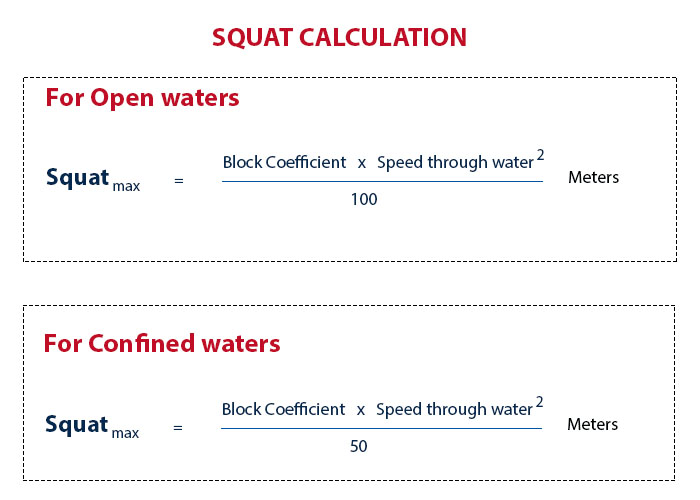 If you notice, the simplified formula above is derived by applying the blockage factor of open sea (0.100) and that of a canal (0.265).
If you notice, the simplified formula above is derived by applying the blockage factor of open sea (0.100) and that of a canal (0.265).
Calculating squat with a software
There are plenty of softwares available to calculate squat. If you are using a software onboard for calculating squat, make sure that it has been provided by your shore office. Random softwares can give wrong values and as such can lead to mis-calculation of squat.
One of the authentic and good software for calculating squat is UKC manager.
To calculate the squat on UKC manager software, open UKC manager and enter ship’s static data.
Next enter ship’s dynamic data. In the dynamic data we just need to enter the values of draft at forward and aft perpendicular. Rest of the data is not required if you only need to have the value for squat.
Next enter topographical data. If you are in doubt about sea type (open, restricted or canal), assume canal for being on safer side.
Now under the “UKC Calculation options” we can tell the software what we want to know ? Do we want to know the speed at which we can achieve required UKC ? Or do we want to know at what height of tide we can achieve the required UKC ? or do we want to know what should be our static draft to achieve the required UKC ?
After choosing the required option, we can save and then click on results.
It will give the required results in complete detail which navigators can use for navigation.
Question 5: What are the signs that show vessel is experiencing squat
While we need to allow the squat while calculating the ship’s UKC in all stages of voyage, there are certain signs which can show that we have entered in the shallow waters. Knowledge of these signs can help the navigators to be more vigilant and keep an eye on the echo sounder.
Presence of these signs is also a good time to re-confirm the squat with your calculation. For example if we expect our UKC to be 5 meters at this position and actual UKC is 4 meters, it would be better that we reduce our UKC by 1 meter in other stages of the voyage. We can then re-calculate if we are complying with UKC policy of the company. If not we can calculate at what speed we can comply and proceed at that speed.
So what are these signs which show that vessel is in shallow water and is experiencing squat ? These signs are
- Ship’s steering becomes sluggish. That is it becomes comparitively difficult to steer the ship
- Engine rpm will decrease to compensate for the load on the engine.
- The speed of the ship will decrease. I have experienced with 0.7 meters UKC, vessel moving at full ahead only making 6 knots GPS speed.
- The ship may start to vibrate
- Mud showing up around ship’s hull
- Vessel’s rolling and pitching reduced
- Turning diameter of the vessel increases (it can become as much as twice to that in open sea)
Conclusion
Squat is not a theoritical term. It is a real practical phenomenon experienced on ships moving in shallow waters. People have lost life because of ships that sank because of squat. Ship owners have lost millions of dollars because of grounding of ships.
It makes more and more important to have complete knowledge of squat and answer to these five questions can help in that.
Do you know any other question related to squat that has gone unanswered ?
Share this:

About Capt Rajeev Jassal
Capt. Rajeev Jassal has sailed for over 24 years mainly on crude oil, product and chemical tankers. He holds MBA in shipping & Logistics degree from London. He has done extensive research on quantitatively measuring Safety culture onboard and safety climate ashore which he believes is the most important element for safer shipping.
Search Blog
109 Comments


Very clearly explained sir.....Thank you.

Glad you liked it Rakesh..

A very comprehansive explaination. Nothing left to doubt

Thank you Capt Vijay for your kind words..

Just one question.. Can there be better explanation than that ? And the answer would be NO.. Thanks for your great efforts.

Happy that you liked it Vinay...

Great explanation sir

Glad you liked it Rajdeep..

Thanks Capt Rajeev for one more marvel. Your dedication is commendable. Very clearly explained and nicely presented.

Thank you Capt Sanjay for your kind words. People like you reading this is the fuel required for the hard work..

Very well explained sir.... it almost cleared all of my ambiguity , about squat

I am glad that it could be of some help to you Siddhant..

Good work on the blog Rajeev!

This comment coming from you mean a lot to me Sir. Thanks a lot Sir.

Clearly understood.Thankyou

Glad you liked it Akshay..

It was clear cut explantion sir ji

Thank you for reading Selambharasan..

nice explanation cap

Thank you Vamsi..

Thank you so much for your clear an compleate explanation . I would like to add, acordinly with some authors the squat will be at the head or stern with a ship trim by stern acordinly with the amount of the static trim by stern....static trim by stern leads to squat by stern ...it is no a fix rule.... Thank you.

Glad you liked it Alejandro.. Yes you are right about the static trim..

Thank you so much for a clear cut explanation

Glad you liked it Gulbag..

Thank you very much for explaining this in a very simple yet precise way.Already forwarded it to my colleagues and cadets.

Happy that you found it useful Subodh. Thank you so much for forwarding it.

Dear Rajeev, this is a very good explanation of squat phenomenon. Thanks a lot. I will forward this to my friends.

Glad you liked it Cem.. Thanks for sharing it with your friends..

I noted squat while alongside a berth on a river. We had calculated the expected draft before coming alongside and took visual draft readings, applied the salinity and the numbers were off. Then we applied the squat calculations due to the current and UKC and it worked out perfectly. It was a first for me.

Yes Tim, you are right. Vessel will have squat while alongside a river berth because of river current.

Good explanation! The Inverse Ship can avoid the Squat Effect. Visit the website: http://www.magaimotor.magai.eu/inverse_ship.php for more information. There isn't any back flow water outside of the hull. Almost no waves before and after the ship. See video: http://www.magaimotor.magai.eu/videok.php

Great job....Keep the engines running full ahead since lot to achieve...Thanks and kind regards.

Thanks Capt Jagdeep..

Thank you for good job. Can you explain please how squat affect vessel’s stability? Is it because change of ships underwater volume, change of center of buoyancy, change to KM? Is the difference between KM figures of corresponding drafts is directly applicable for calculations? And other question, is the no any changes to drafts when vessel at deep sea?

Yes, Squat will have some effect on stability as underwater volumes and so centre of buoyancy changes a bit. But it is not as easy as having and comparing stability of two conditions. In this case as there is no weight distribution change centre of gravity go the ship remains same. At Deep sea, the change in underwater clearance is negligible if any.

Very clear explanation. Tomorrow is my Orals, and I'm confident about Squat now.

Glad to hear that Raja..

thanks sir !!!

Thanks Tran..

Thanks sir...!!

Thanks for reading Vijay..

Awesome explanation, although some of these softwares that we encounter on board as the one shown in the article have this ship dynamic data which need to be taken into account. (change of draft due to effect of wind, tide, sea, atmosphere pressure and so), i think we will all appreciate if you can write down and advise us how to calculate or where to find them exactly. From my experiance some colegues are putting some values there just not to leave it blank, but infact after this during vetting or PSC it is embarassing when they have to explain how did they came with these values. Thanks in advance.

Nice and very neatly clearifi sir..

Thanks Indrajeet..

Great efforts

Thanks capt Athavan..

Very well explained with examples. Thanks for the great effort...

Glad you liked it Capt Bhattacharyya..

Very East to understand..

Thanks Maninder..

Very Well explained sir .. thank u so much.. for this beautiful knowledge.

Glad you found it useful Shitanshu..

Excellent

Thanks Naresh..

Very well explained..it helped me to clear my doubts ..good work sir

Glad it helped you Varun..

This is also the reason that vessel can experience squat while alongside in a river with strong current. In this case vessel’s speed over ground is zero but speed through water is equal to the the river current. PLS EXPLAIN THIS SIR

the ship will experience squat (and thus reduced UKC) in river ports with strong currents even when ship is moored. This is because the water is flowing under the ship's hull which will cause the reduced pressure.

Thanks very much sir .. Indian needs people like you to produce better captains .. for industry .

Comprehensive and simple to understand.

excellent explanation sir...nowhere else did i find an explanation as clear and helpful...the other topics covered by you are equally good...Thank You Sir..hope to see more topics covered...

Respected Sir, I would like to highly appreciate you for your kind effort you put in here to make things so simplified.Sir our Maritime Industry seriously need your presence .While reading your blog it seems like an idiot can even understand topics you covers.Sir You are absolutely great.Sir kindly keep on helping God may Bless you Sir

Rajeev, I have now read through your 5 Questions and comments. I find some of my/your quoted formulae are now out of date. Do you wish conversation about this? My UK telephone number is OO44 1704 569 454. Best wishes. Bryan Barrass.

Rajeev, Some of these formulae are out of date. Do you wish to have conversation about them? Best wishes. Bryan Barrass.

My Telephone Number is 0044 1704 569 454.

Nice explanation Capt. Rajeev. Kind regards

Very well explained....Could not find any better and simple explaination

as 50 confined water had breath restrictions ; as 100 open sea without breath restrictions , so is it explain why 50 and 100?

Thanks for the detailed explanation, im using this for Ship Handling class, i would love to see some problem examples tho

Explained nicely . can you upload a squat table in ship we use .

Very nice and clear with reasonable logic and examples make me happy. Superb sir.

Thanks for these info's now my knowledge for squat effect is as open wide like an open sea

Thank you very much for the excellent explanation I am now fully aware of what is (Block Coefficient) and calculation of squat. God bless you sir.

I have recently started following your blog and must say your explanations are very good about everything you write, appreciate your efforts. Please continue to share your Knowledge.

Hello sir, thank you very much for this blog. Your explanation is very simple and easy to understand helped me in clearing my doubts regarding squat . Thank you

Thank you very much sir. respect from Bangladesh.

Same here too, thanks a lot.

Very clear and simply explained ! Thanks Capt. Rajeev Jassal. I wonder if you have experienced the navigation in France La Rochelle/Gironde area where Chief Pilot says: ""Please note that BARRAS Calculation for UKC in Gironde and Garonne may NOT be used, several publication describes this type of navigation i.e. squat prediction in muddy navigation area, Ghent university 2010/ SOGREAH Navigation dans les chenaux envasés 1991"" ? Thanks in advance for your reply !

Thank you for your explanation, but still have one question: will be any effect of squat on depth more than 1000 meters, vessel VLGC 320 m , speed 16 knots, open ocean area?

Good explanation....Capt

hello, can you tell me please where are these numbers (blockage factor 0.1 and 0.265) taken from? are there any conventional requirements? and what kind of water shall be deemed as confind waters, i read somewhere that breadth of water must be not more than 8.5 times ships beam so as to deem water area confined, but is just breadth enough? why not taking in account the depth of the water?

Great work! Captain. All your blogs are very informative and easy to understand. Will you please make a blog on the topic of interaction of ships and any case study related to it? Thank you

I was preparing for my exams and this topic was quite difficult for me to understand. Thanks to you to made this topic crystal clear for me.

Would a large thrust in reverses to stop the vessel cause a vessel to increase here draft?

Great job Rajeev. Keep it up. Just one question, Is there a visual change in draft due to squat? Meaning, if I am standing on the pier can I see the draft change due to squat or there is no change in draft? Appreciate your clarification. Thanks

Just to say waoooo

Again, almost. A ship along side (not moving, hangs its pilot ladder 2 meter above the waterline, at pilots disembarcation the squad is 1 meter. Now the pilot ladder is yes 2 meter above the water. As a vessel moves through the water, as stated the speed of the water increases thus the prsire goes down, what remains the same is the pressure of the air. The level of the water will go down with lowering of its pressure,this loss of hight equals the lowering of the under keel clearance. The vessel sails in a "dent" in the water.

Well done . A great simple explanation … thanks a lot pro.

Sir, Can you help me to explain, why mostly UKC policy of companies stated 1,5% of the moulded breadth fairway inside port and alongside? Many thanks

Dear Rajeev very good explanation, thank you. I would like to ask you about the reference of the above formulas because I have slightly different complex formula from Dr Barrass for Squat calculation. Can you advise pls which book you use? Thank you in advance.

Take a look in the book Shiphandling for the Mariner.. written by DANIEL H. MAcELREVEY AND DANIEL E. MAcELREVEY.

There could be no more better explanation than u did here, just excellent, keep enlightening us with your knowledge

Thanks much for the excellent explanation sir.

I read all your Post its Awesome any Lay man Can Understand its simplified in such a way.Especially it will be useful for the those who are taking First Command or Candidates From the Rating Background Promoting As Master. HATS OFF

Very helpful information.. Thanks sir

Great article sir...keep doing good work sir....thank you

Luck can never last a lifetime

Thank you very much for the step by step explanation. I am always reading your MySeaTime. And it really helped me a lot. Hoped you can bring more interesting knowledge about other topics. I am a deck officer. God bless you always.

Hi Captain Jassal! Many thanks for this detailed post on ship squat. I am running a website called www.thenavalarch.com that also aims at adding such a knowledge base for the industry online. We have a squat calculator too. This is a very good read, and you're doing a good service to the industry. Keep it up!

Searched for 1 answer, but got meny. Thank you so much, even it is understandable as compared to the expensive smartclasses that showing with the video.

When I read your blog of any topic. I feel same like when someone explain by mouth you are writing words to words sir very nice explain thanks for making this blog.

Squat and Bank effect a possibility in the grounding of EVER GIVEN in the Suez Canal??.

Sir Mashallah bht umdah, everything regarding squat is clear, I pray that may you be succeed in this life and hereafter Ameen!

The best explanation found on the internet. Thank you Captain for the explanation.

My ex-husband and I had always managed to stay friendly after our divorce in February 2017. But I always wanted to get back together with him, All it took was a visit to this spell casters website last December, because my dream was to start a new year with my husband, and live happily with him.. This spell caster requested a specific love spell for me and my husband, and I accepted it. And this powerful spell caster began to work his magic. And 48 hours after this spell caster worked for me, my husband called me back for us to be together again, and he was remorseful for all his wrong deeds. My spell is working because guess what: My “husband” is back and we are making preparations on how to go to court and withdraw our divorce papers ASAP. This is nothing short of a miracle. Thank you Dr Emu for your powerful spells. Words are not enough. Email emutemple@gmail.com Phone/WhatsApp +2347012841542.

I want to genuinely thank Dr Ayoola for making my dream come through. I was on the internet when I saw people posting and talking about Dr Ayoola. On How he has help them in winning lottery. My name is Gerald Muswagon this is my story on how I win $10 million After reading the article about Dr Ayoola I contacted him I told him to help me win lottery he respond to me by saying he will help me after working with him he assured me that I will win. Which I believe. After working with Dr Ayoola he gave me a number and ask me to go and play it which I did today I’m here shearing a testimony about this same man Dr Ayoola help me to win $10 million dollars all thanks to you Dr I will keep taking about your good because you are a man of your word I hope people that really need this will come across it for you to help them as well. If you want to win big in lottery contact Dr Ayoola today and be rest assured of winning contact him via email drayoolasolutionhome@gmail. com or https://www.facebook.com/Dr-Ayoola-105640401516053/ text or call +14809032128

What value of Cb is considered in calculating squat. (Cb for Mean Draft or Cb for Max Draft)
Leave Comment
More things to do on myseatime

MySeaTime Blogs
Learn the difficult concepts of sailing described in a easy and story-telling way. These detailed and well researched articles provides value reading for all ranks.

Seafarers Question Answers
Ask or answer a question on this forum. Knowledge dies if it remains in our head. Share your knowledge by writing answers to the question

MySeaTime Podcast
This podcast on the maritime matters will provide value to the listeners. Short, crisp and full of value. Stay tuned for this section.

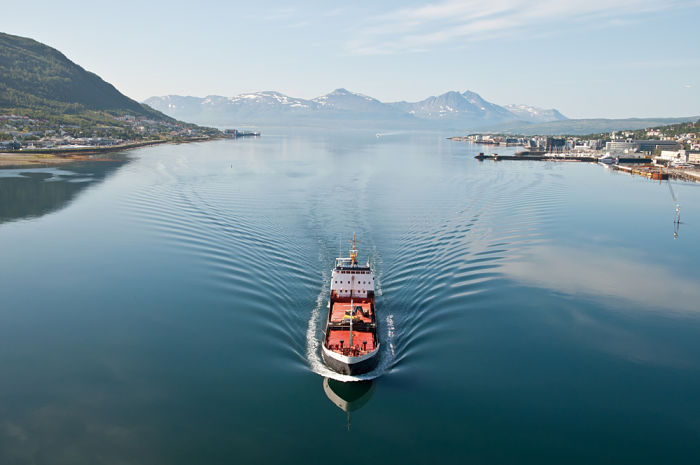
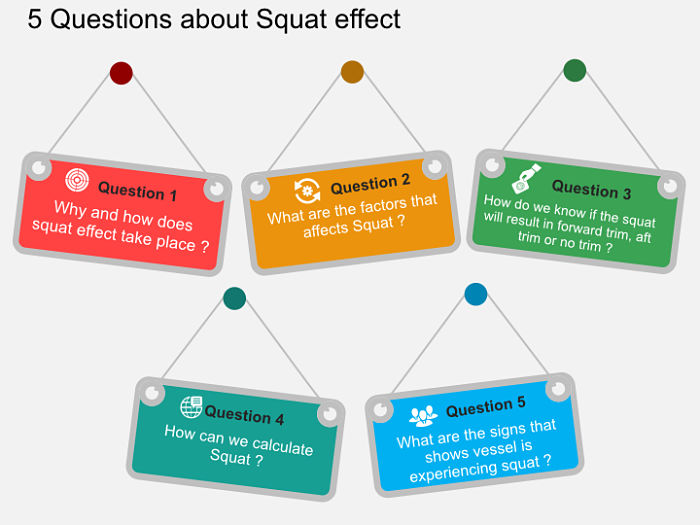
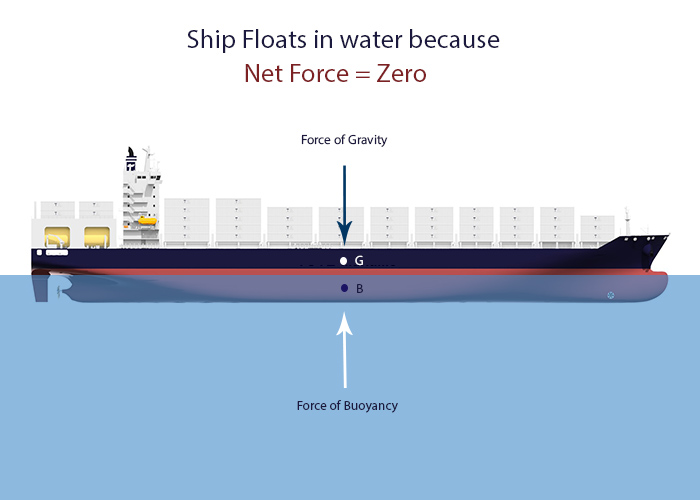
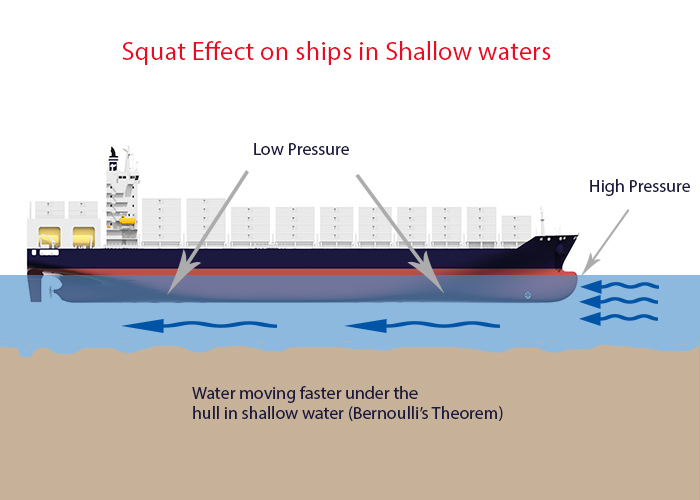
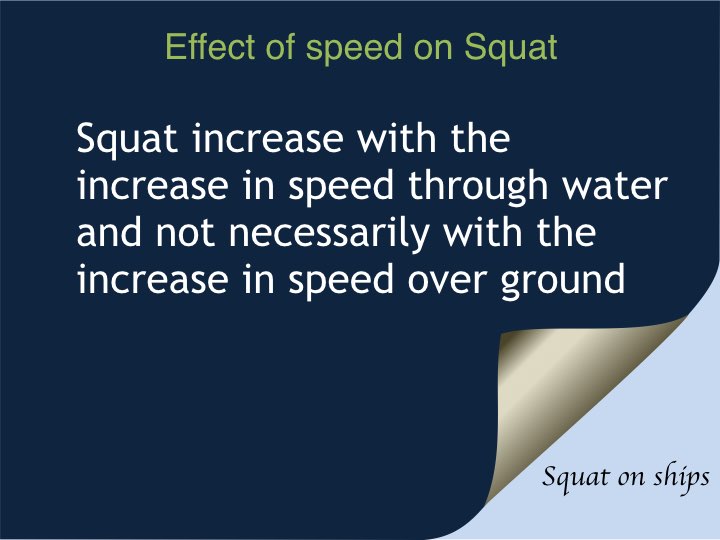
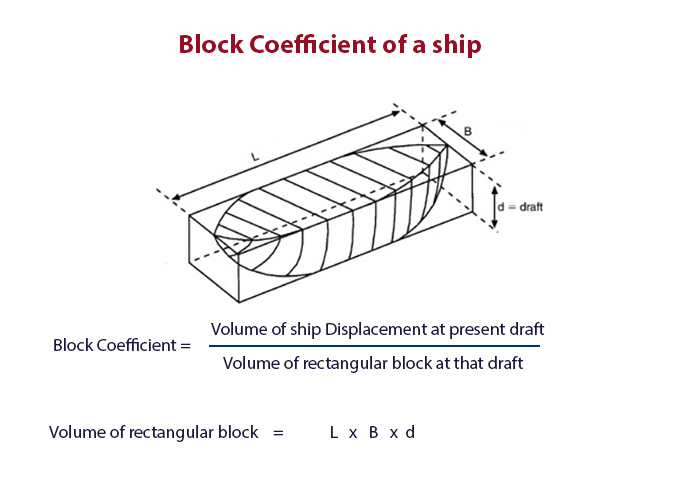
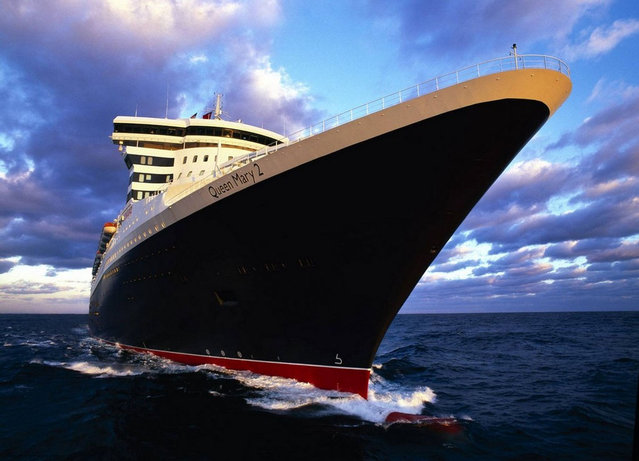
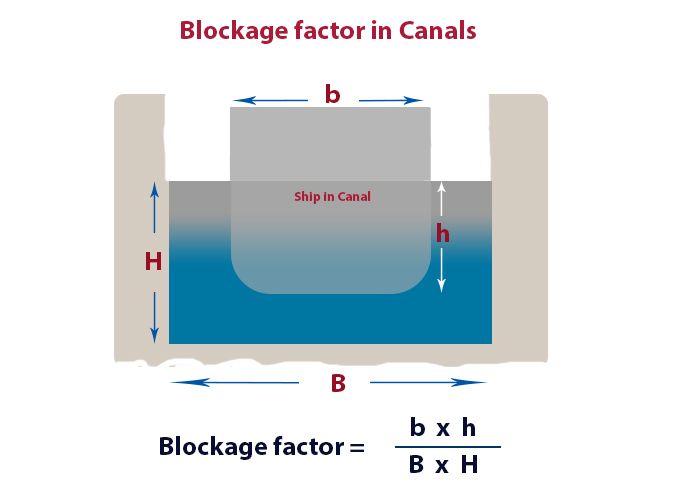
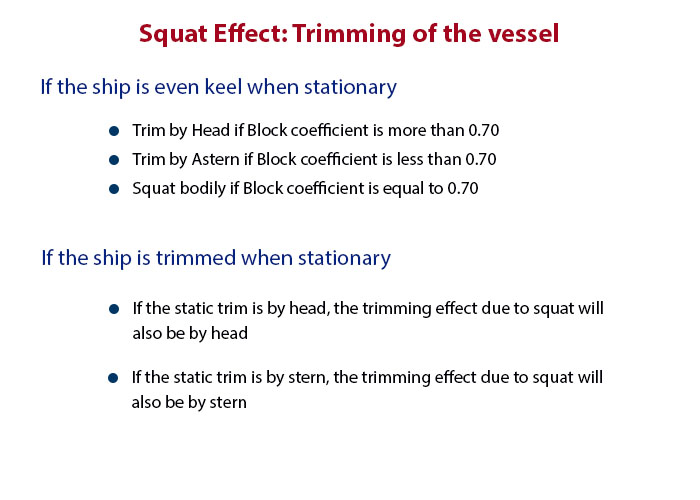
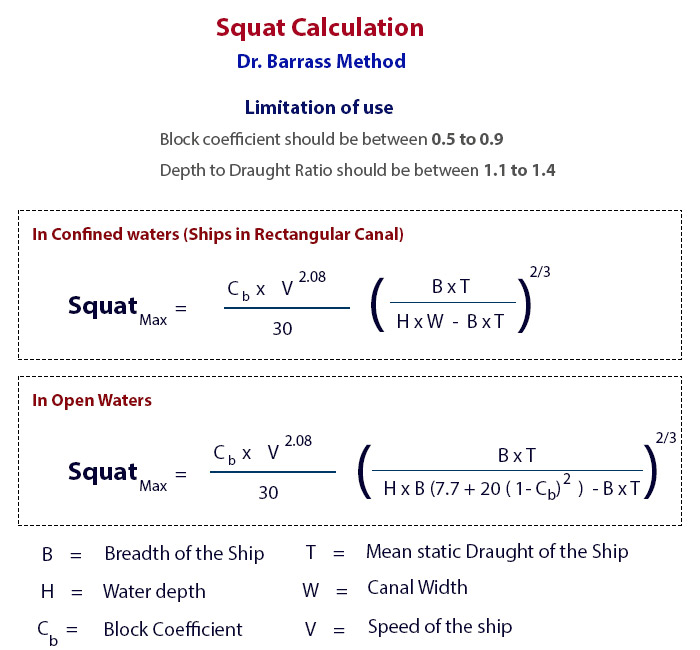
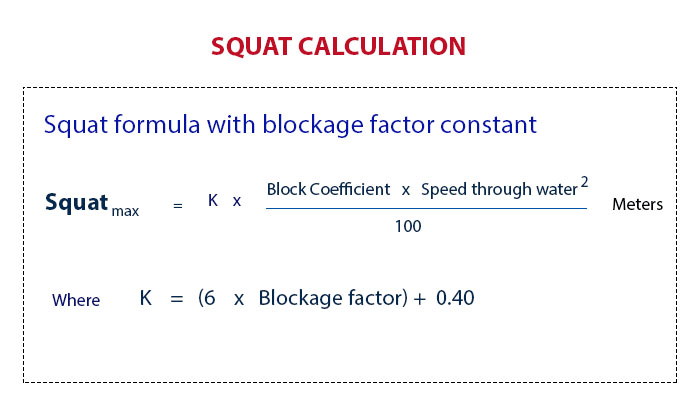
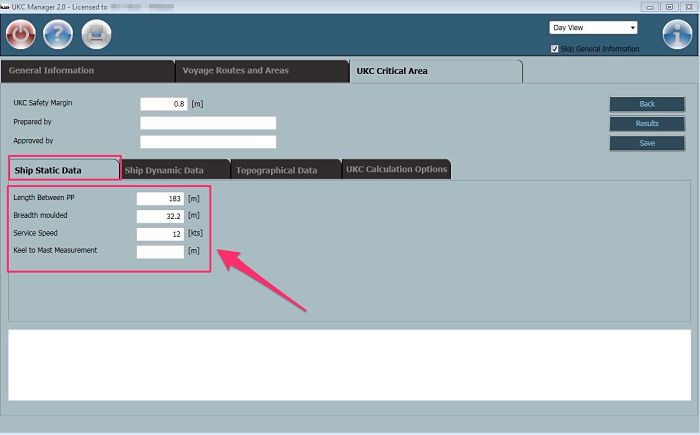
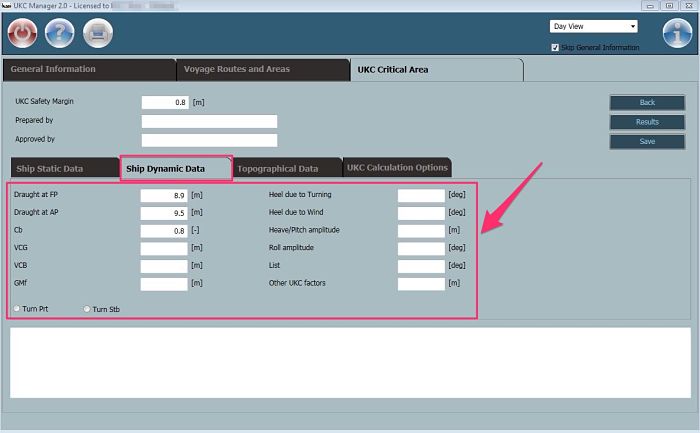
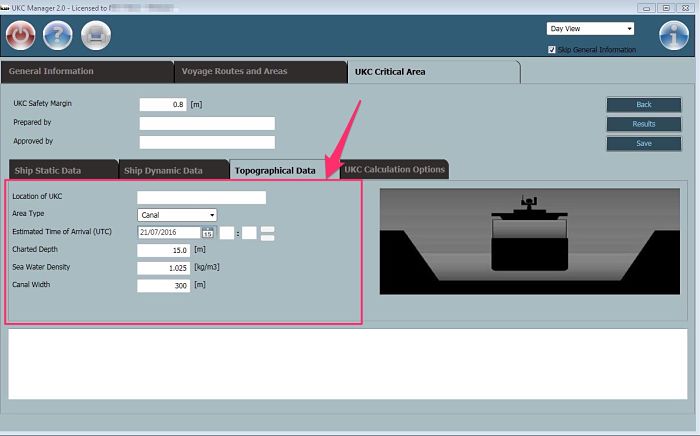
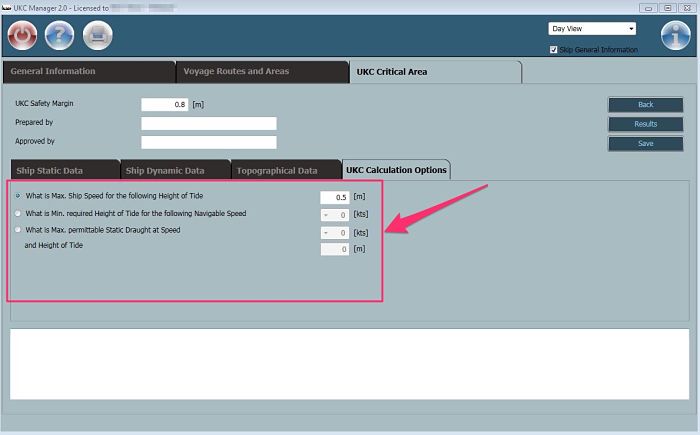
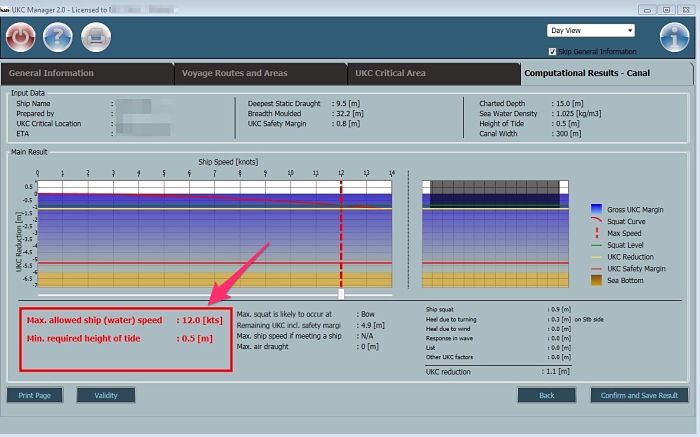
Thnx. Gud explanation
Glad you liked it Vivek..